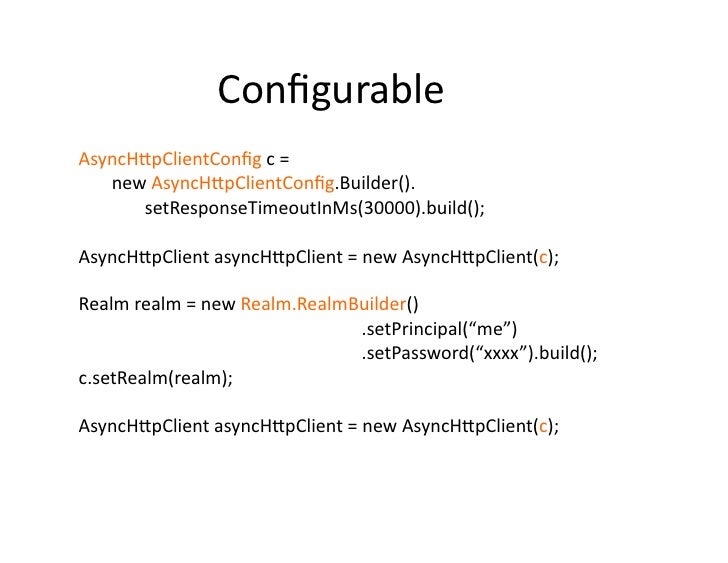
Instead, it can now process it only when there is data to be processed. With NIO being an HTTP persistent connection, the thread does not require it to block on recv call. NIO allowed the “ java server developer” to tackle problem 2 of blocking one thread per TCP connection. The ANSWER is no… the OS instruct the hardware to interupt when there is data to read or write. Does it fork a thread internally and that thread gets blocked? Some background: the OS along with blocking socket api also provides a non-blocking version of the socket api.īut how does the OS provide that. Nio is the non-blocking API for sending/receiving data over socket. The First Solution came from the creator of JVM. Since OS provides a blocking socket Recv api, the jvm has to call the OS blocking Recv method in order to listen for more requests on same tcp connection from the client. But why does the server have to block one thread per connection? As with persistent connection, the underlying TCP connection will be kept alive and the server has to block one thread per connection. Things got even worse with http1.1 persistent connection. Under such a situation, the thread is mostly sitting idle and JVM can run out of thread easily. For Example: fetching data from sub-service take long time. The thread-per-request model fails when there are long pauses during the processing of each request. one Thread per Request started to show limitations.

Time passed and the internet took over the world. Also, the additional limitation was that the response object is committed on doGet method exit.ĭue to these limitations, people had to use one thread for processing one request. Once “application developer” wants to send the response, he can call OutPutRes.write().Ī thing to Note:Since socket api is blocking, hence OutPutRes.write() is also blocking. So that java application developer can implement doGet and they can write their business logic. Once the java servlet spec entered the world, it said:ĭear java server developers, please provide a method like below: doGet(inputReq, OutPutRes) Java Application Developer: People who are building buisness application on top of tomcat. Java Server Developer: People who are using the java socket api and implementing http protocol like tomcat.
Async http client java code#
Code sharing was becoming hard, the java world demanded a standardization. But they had to keep one java thread for every socket(client).Įverybody was writing their own flavor of HTTP servers.

The world was happy and java developers started using the API to send/receive the data. Since java is just a process running on top of linux(OS), hence this java program has to use this blocking api provided by OS.

So, what is the OS socket behaviour? OS provides Socket programming api, which has send/recv blocking call. The original authors of JVM mapped this API behavior to OS socket API, almost one to one. In the pre-Java 1.4world, Java provides an API to send/receive data over the network socket. In this article, I am trying to explain the difference between Async-IO and Async-Request processing in the HTTP request in the Java world.


 0 kommentar(er)
0 kommentar(er)
